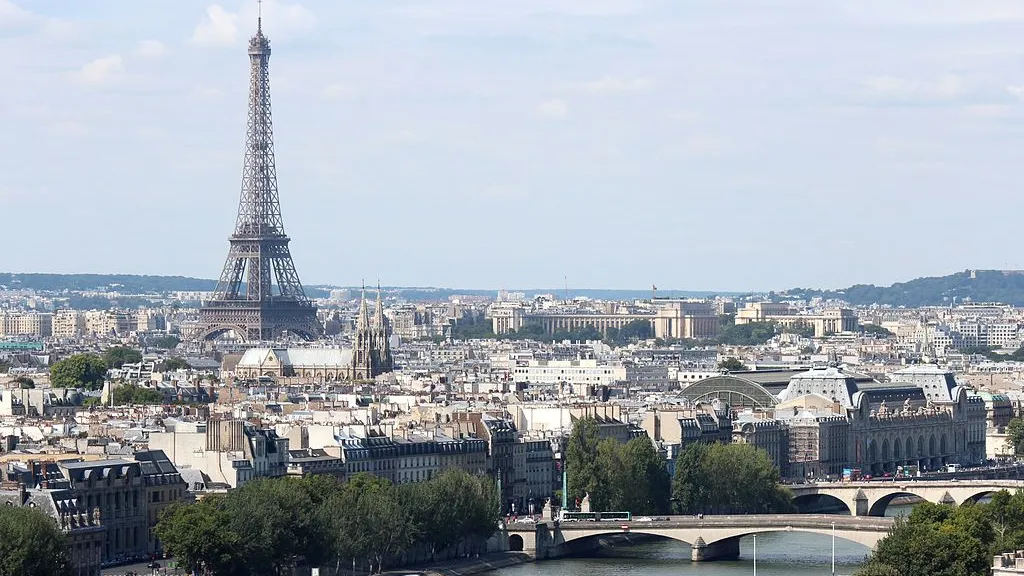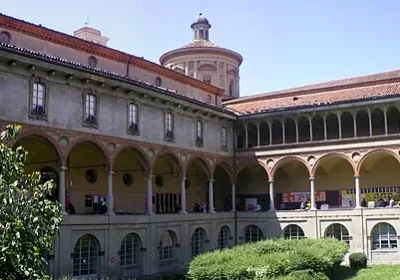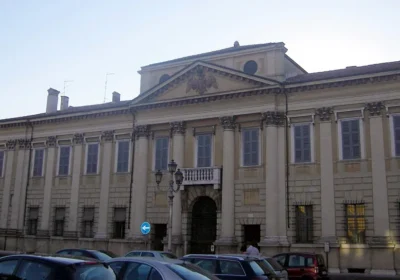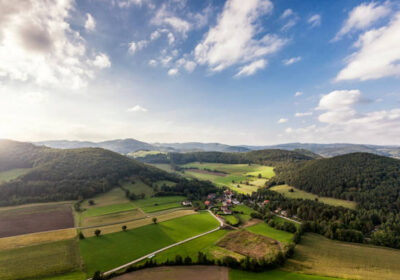Paris is often referred to as the “Capital of the World”. It was founded in the 3rd century BC by Celts who called themselves “Parisians”. Since then, 23 centuries have passed: settlements of Gauls, Caesar’s legions, barbarian invasions, dynasties and regimes, conspiracies and revolutions, greats of this world and billions of unknowns have created probably the most beautiful city in the world.
Our Russian-speaking guide in Paris will tell you amazing things and many new and previously unknown things.
Siete is the island where Paris begins and where Notre Dame de Paris and the Sainte-Chapelle, built by St Louis to hold the crown of thorns of Jesus Christ, stand. The first Roman fortresses once stood here, then the castles of the first kings. Now the Conciergerie, an early 14th century castle built for the French kings but converted into a prison, eventually becoming part of … the Palace of Justice, stands majestically here. Today you can attend the ongoing trials of known terrorists or common offenders, and walk through the rooms that once served the kings. In the 19th century, the Prefect of Paris, Baron Haussmann, rebuilt the city and, in particular, the Cité. The new buildings of the Palais de Justice, the Hospital, the Commercial Tribunal, the Criminal Investigation Department (where Simenon’s hero Commissaire Maigret worked) and the Prefecture changed the face of the island from the medieval and picturesque heart of Paris into a grand administrative centre. This is where the Gallo-Roman province of Lutetia grew up, up from the Seine to the top of St Genevieve Hill, as this hill was not inundated in floods. Now it is a student and restaurant quarter with preserved buildings of XIII – XIX centuries. The Boulevards Saint-Michel and Saint-Germain (both laid out under Baron Osman) and the Rue Saint-Jacques, which already existed under the Romans in the 1st century AD, structure this ancient part of the city. The Church of Saint-Severin (13th century) once hosted the Sorbonne’s student assemblies; the Cluny Mansion (15th century) is now a unique museum of medieval art, including the powerful ruins of Roman baths (3rd century).
In the middle of the hill is the Sorbonne, a university founded in the 13th century, The College of France, built in the 16th century by Francis I, the Lycée Louis the Great, whose pupils included Voltaire and Robespierre… Finally, at the top of St Genevieve Hill, the Pantheon rises majestically, where Victor Hugo, Voltaire, Rousseau, Zola are buried…
Here, since the 6th century, there has been the monastery of St Genevieve, was the convent of St Genevieve, and what remains of it are the tombs of the first king of France, Chlodwig and his wife Clotilde (V-VI centuries), and the refectories of the 13th century,
Near the lyceum – a church of the XVI century. with the remains of the relics of St. Genevieve – the legendary patroness of Paris, the ruins of the fortress wall of the late XII century, Luxembourg Palace (now the Senate) and a garden with statues of queens, regentesses, artists, artists, writers… Here is also the original of the Statue of Liberty and probably the most beautiful fountain in Paris – the Fountain of the Medici, where a huge Cyclops is going to punish lying in the arms of lovers…
The Marais quarter begins on the right bank of the Seine and is located between the City Hall and the Place de la Bastille. From the 14th to 17th centuries, it was the most prestigious quarter of the city, home to kings and the mansions of nobles. In the 19th century, Baron Haussmann’s rebuilds did not affect this neighbourhood, which was impoverished but still retained much of its former splendour. Today it is almost impossible to travel through it by bus during the day because of the narrow streets and traffic jams. Therefore, for those interested, we offer a walking tour of the Marais or include this area in an evening tour.
Voltaire Embankment stretches on the other side of the Seine opposite the Louvre: here is the house where the famous philosopher lived and died, and next to it – the building where the famous dancer Rudolf Nureyev spent his last years. On this embankment lived the painter Engre, Herzen… The Louvre, which was built and rebuilt over the centuries, next to the royal church, whose bell sounded the signal for the beginning of the beating of the Huguenots in the bloody Bartholomew’s Night. And of course – the Great Triumphal Way – an axis running exactly along the centre of Paris and marked by the most famous buildings, highways, parks, squares – the Pyramid of the Louvre (XX century.), the Arc de la Carrousel (XIX c.), the Tuileries Garden (XVI c.), Place de la Concorde (XVIII c.), Luxor Obelisk (XIII c. BC), Champs Elysees, Arc de Triomphe (XIX c.), Arc de la Défense (XX c.) … In clear weather, the entire axis can be seen, which is a spectacular sight! On the opposite side of the Seine is the modern building of the Académie de France. This is the dying gift of Cardinal Mazarini, whose money was used to build the building of the College of the Four Provinces, where the Academy later moved. This is where the famous cardinal rests.
The Musée d’Orsay is a former railway station whose façade has been turned into a work of art as it is located opposite the Tuileries Park. It is the second largest and most important museum in Paris, representing the collection of the second half of the 19th and early 20th centuries. Here you can find works not only of the most famous painters and sculptors, but also, for example, a canvas of Boris Pasternak’s father…
Near the museum is a small mansion, where the Museum of the Legion of Honour is located. This building is the original White House. Not far from it is another palace, the mansion of Josephine Beauharnais. Here, opposite the Louvre, around the monastery of Saint-Germain (already in the VII century. was a royal tomb), between the Latin Quarter and the National Assembly is the famous Saint-Germain suburb, where in the XVIII-XIX centuries. moved from the Marais prestigious part of the city. Mansions and palaces, most of which now house ministries and embassies, still adorn the neighbourhood today.
The National Assembly is the former Petit Bourbon Palace, which overlooked the Seine at the rear. Napoleon added a portico and gave this back part of the palace a grand and harmonious appearance. The Lower Chamber of the French Parliament is located here.
From the National Assembly to the Place de la Concorde, we are led by a bridge built from the stones of the Bastille fortress dismantled by the revolutionaries. During the Revolution, guillotines stood on the square, where more than 1,000 people died, including the king, queen and Robespierre… Now, in the middle of the Place de la Concorde stands an obelisk from Luxor, a gift from the King of Egypt. It is the oldest monument in Paris, 33 centuries old, and the hieroglyphs on it glorify the exploits of Pharaoh Ramses II, a contemporary of the prophet Moses. From here you can see the Champs-Élysées, along which the multi-coloured festive garland moving cars.
The Royal Street and the Grand Boulevards was the city wall, which at the end of XII century. built by Phillip-Augustus, protecting Paris from Richard the Lionheart, whose possessions began 80 km. from the city. Now there are the best restaurants in Paris (“Maxim” is not the first in their row), elite shops, Grand Opera…
Vendôme Square, where once was the mansion of the Duke of Vendôme – the son of Henry IV, the centre of the most famous jewellery firms. The square was built in the time of Louis XIV, and at its centre is a column erected by Napoleon, with bas-reliefs of his victories cast in bronze of Prussian and Russian cannon taken at Austerlitz. Chekhov stayed in one of the houses, Chopin died in another, Herzen lived in a third… Alexander II came here to visit Catherine Dolgorukoi after a failed assassination attempt, and Lady Di left the Ritz Hotel here to meet tragedy…
The 16th district is the most prestigious in Paris. There is often only one flat per floor, and the price per square metre. – And, of course, the Champs-Elysees and the Arc de Triomphe, which changes its appearance depending on which of the 12 streets leading to it you take… The Lido, the Krazy Horse, famous hotels, restaurants, night bars, shops…
The Trocadero Hill, which overlooks Paris and, above all, the Eiffel Tower. Behind it stretches the Champ de Mars, leading to the École Militaire (Military School) from which Napoleon graduated… In the distance, to the left of the tower, is the golden dome of the Cathedral of the House of Invalides, built by Louis the Great for the invalids of war. Zinovy Peshkov, Sverdlov’s brother and Gorky’s godson, lay in the hospital, which is still in operation today… The House of Invalides is often a military museum, and in the Cathedral is Napoleon’s tomb. Nearby lie his brothers and his son, brought here by Hitler’s personal order, as well as famous French marshals and generals… The beauty of the city is especially lustrous due to its numerous bridges, the most beautiful of which is named in honour of the Russian Emperor Alexander III. It was built for the 1900 Paris World’s Fair, The two palaces, the Grand and the Petit Palais, which now house the Art Gallery, the Exhibition Hall, the Slavic Department of the Sorbonne, and the Museum of Scientific Discoveries, have been preserved.
Paris bridges, Paris fountains, Paris cafes, streets, squares, restaurants, museums, parks, shops, theatres…
Such a diverse and remarkably complete Paris is “worth a mass”, as King Henry IV said, and he was a connoisseur…
Paris is “worth a mass”.

















